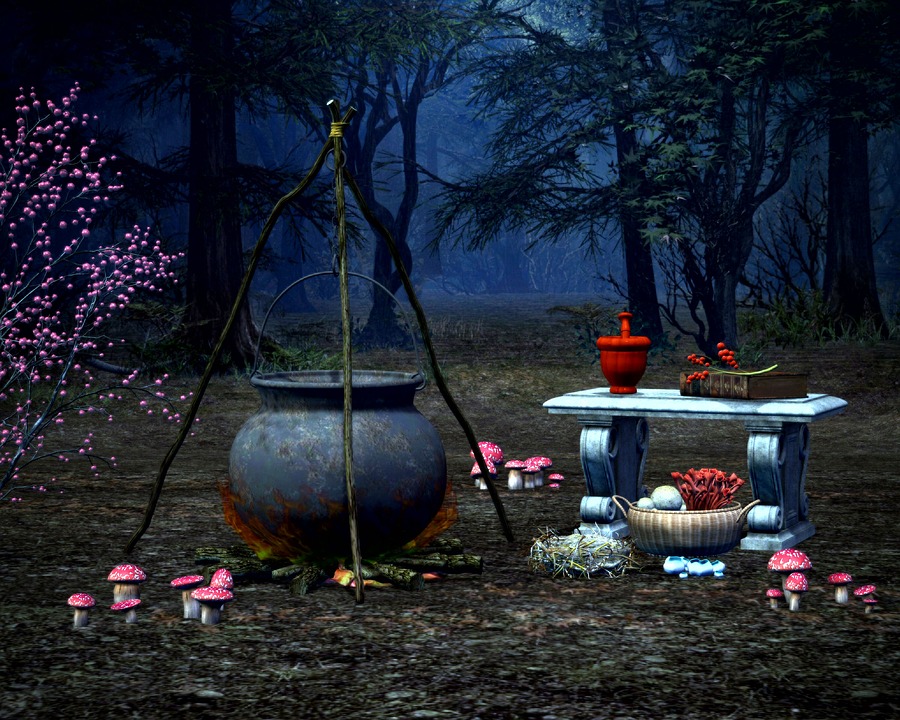 Submitted by Wise Woman on
Submitted by Wise Woman on

Well, it's October now, the month which many people call "Spooky Season." Even thought it's always spooky season here at the New England Folklore blog, I do love this month and Halloween. It's the season for pumpkins, ghosts, and of course witches.
New England is full of witch legends. Although the Salem trials are the most famous witchcraft incident in Massachusetts, lots of other cities and small towns held witch trials or have legends about witches. For example, Norton, a small town in the southeastern part of the state, was supposedly home to three witches in the 1700s.
The most famous alleged witch in Norton was Ann Cobb. I am not sure exactly why Ann was suspected of witchcraft, except for the following. One day she went into town to purchase some items at the general store. She lived about two miles away from the town center, but arrived there only minutes after leaving her house. This was quite fast, so her neighbors suspected she had used supernatural means to travel so quickly. Perhaps she flew, or was transported by some sort of evil spirit? Historical sources don’t specify her neighbors' exact suspicions, but the event was so memorable the town named a bridge after her. (It still exists today, and bears the name Witch Bridge.) Apparently, it didn’t take much to be considered a witch in Norton. Ann Cobb was quite poor and was supported financially by the town in her old age. She died in 1798.
Dora Leonard was another Norton woman suspected of witchcraft. She supposedly caused various forms of mischief around town, like magically setting farm animals loose so they could wander free. Two boys also said she once caused them to miss a squirrel they were shooting at. Despite having a clear shot at a the animal, the boys missed it repeatedly.
As they walked home, frustrated, they noticed a large cat watching them pass by. They believed the cat was really Dora and that she had used witchcraft to make them miss the squirrel. (It seems more likely they were just bad shots looking for someone to blame.) Much like Ann Cobb, Dora Leonard was poor and had to be supported by the town in her old age. As she lay dying in 1786, her house was supposedly filled with strange and terrible noises that frightened away the people attending to her death. Those details about her death are a standard trope in witch legends from New England.
The third alleged witch in this small town was Naomi Burt. Local historian Duane Hurd wrote of her in 1859: “Naomi Burt was also accounted a member of the mysterious sisterhood of witches, and by her wonderful powers gave some trouble to those who fell under the ban of her displeasure.” Wagons lost their wheels when they passed her house, and oxen escaped their yokes. Children held their breath in fear as they ran past her home lest she bewitch them. Sadly, Naomi Burt took her own life on July 4, 1808, a harsh reminder that while these old tales of witchcraft are entertaining to read, it was hard to really be the person they were about.
The Salem witch trials were the last trials of their kind in Massachusetts. They occurred in 1692, but people in New England continued to think their neighbors were witches for hundreds of years after that. They didn't bring them to court anymore, but instead whispered, gossiped about, and sometimes physically threatened anyone they thought was a witch. Often those suspected were poor women who depended on their neighbors' charity for survival. That's clearly the case with the Norton witches. Resentment at having to support someone easily curdled into hatred and accusations of witchcraft.
In many cases, suspected witches were accused of making animals misbehave or preventing hunters from shooting their prey. Maybe this is because the witches were associated with the natural world more than the human world, as evidenced also by their ability to transform into animals. Perhaps they are protecting the animals from harm or mistreatment. "Free the oxen!" It's the more modern, romantic interpretation.
On the other hand, people in the 18th century would have had a very different opinion. A farmer depended on his oxen the way a modern person depends on their car, and a family needed their livestock for food. Any disruption threatened someone's ability to survive. And even though I love squirrels, those two boys probably would have eaten that squirrel for dinner if they killed it. Maybe they went to bed hungry that night.
Just to be clear, I am not saying these women were witches. They weren't. They were social outcasts accused of witchcraft. People just projected their fear onto them. Fear of hunger, of poverty, of illness, and of death. These are real fears we all have, but hopefully we don't project them onto our neighbors. So what's spookier: legendary witches, or real people who actually accused their neighbors of being witches? I think it's the latter.
Peter Muise
http://newenglandfolklore.blogspot.com/2021/10/the-witches-of-norton-magic-animals-and.html